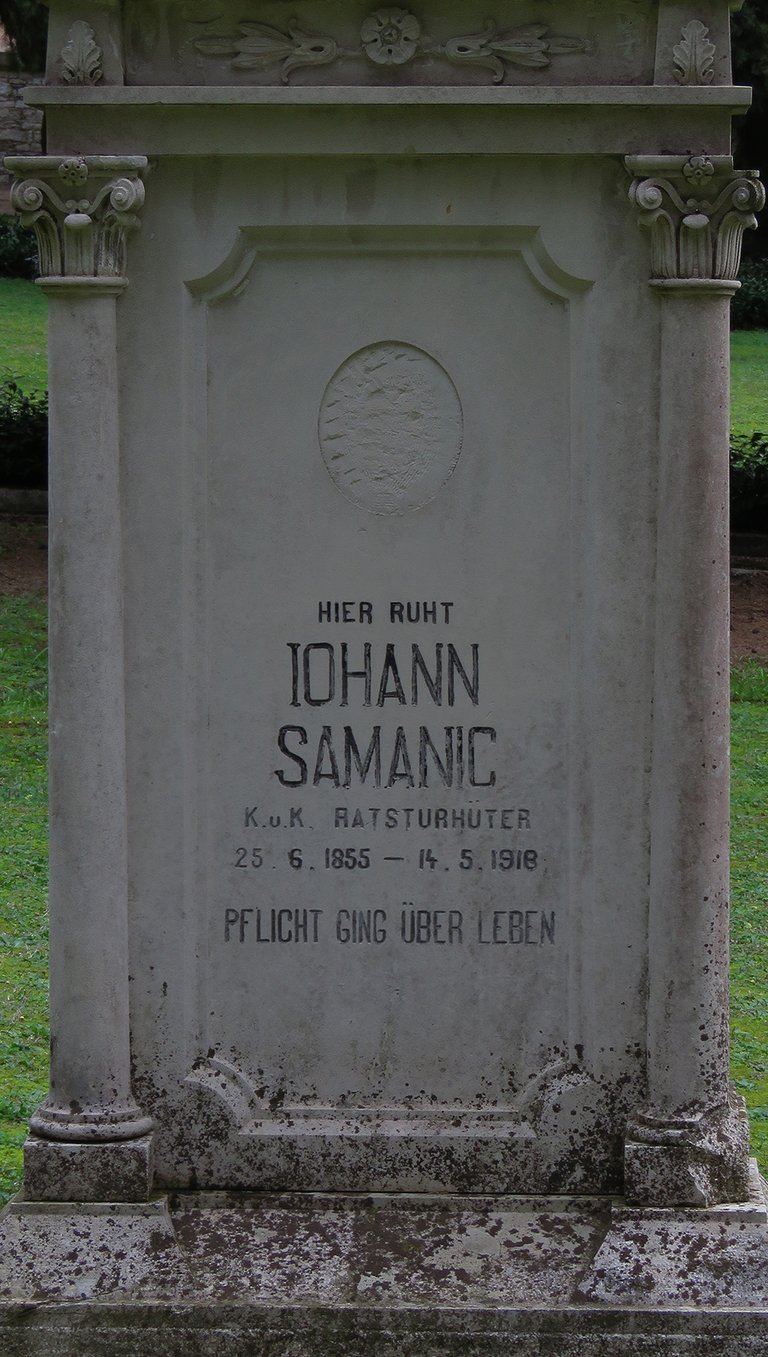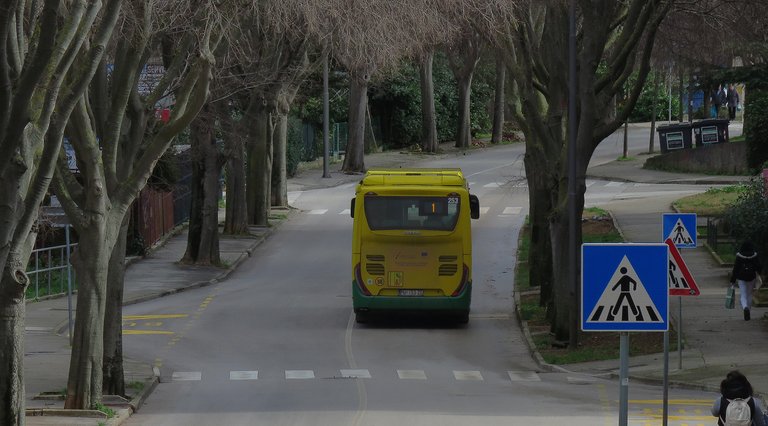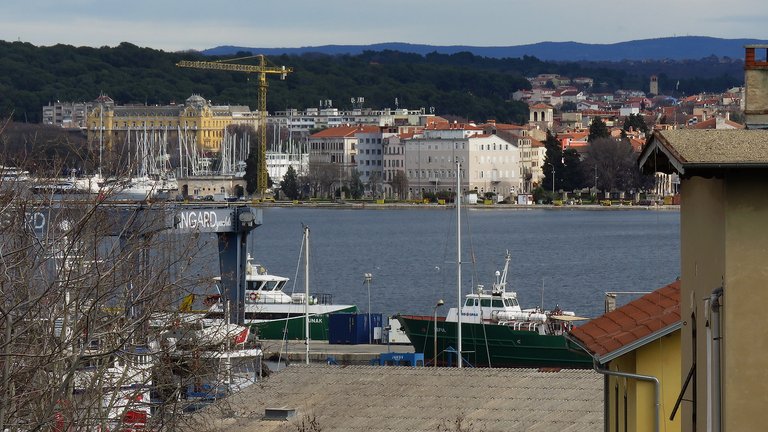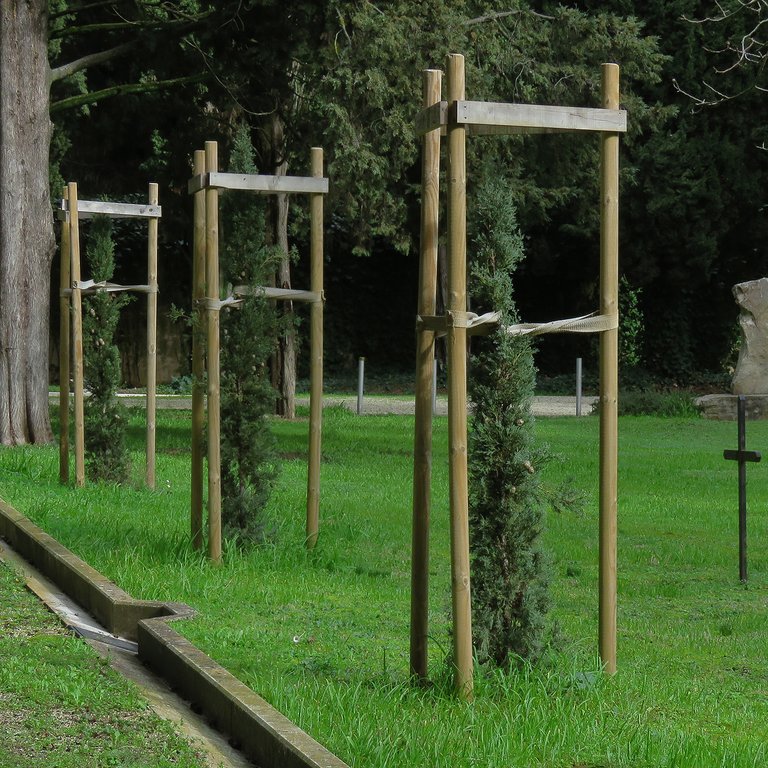Today, after finishing some work in the center of the city, I drove to the historic suburban neighborhood of Stoia. I mean, the name of the place is Stoja, but if I write Stoia, it sounds much better than Stoja when read by the voice that talks to you when you use the "listen" option in PeakD or Google Translate.
The city in question is Pula, the nearest one to where I live. I have only ten kilometers to walk or drive from my hometown to the city.
Not only did I walk among the buildings of Stoia today, but I also took a walk among the old tombstones of the Memorial Naval Cemetery from the Austro-Hungarian period.
Today's walk is mostly about architecture and history. In the opening shot, I presented a group of simple stone crosses in the memorial cemetery, while in this one, you can see one of the large working-class buildings from the same, Austro-Hungarian period when Pula was the main military port of the Dual Monarchy. In the following photograph ...
... you can see the gate of the cemetery.
This is a detail from one of the fairly big, ornate tombstones I came across soon after passing through the gate.
I don't know who Iohan Samanic was and what was his place or rank in the Austro-Hungarian navy but since the German writing states that "Duty overpowered life" and the man lived from June 1855 to May 1918, we can conclude that he died near the end of the World War I.
The grave of Iohan Samanic stands alone, surrounded by neat, short green grass.
Many tombstones are simple crosses...
... with no names ot dates displayed on them.
They stand in small groups like people ready for some unknown ritual.
On another old tombstone, greenish from the algae and mold, I found a photograph.
A beautiful black and white portrait of a lady that looked like an actress from an old, probably silent movie.
I have more graveyard stuff to show you, but let's leave that for later.
I would like to show you a few more shots from the neiberhood first. The old buildings near the cemetery, shown in this photograph, are also examples of the architecture from the Austro-Hungarian period of the city. It looks like they are part of the graveyard infrastructure but I'm not sure about that.
The Renault 4 is a rare car nowadays. I had one in the early nineties. I cruised in a yellow Renault 4 from party to party in those years.
Seeing that car took me on a walk down memory lane for a minute or two.
Here you can see the city bus on the way from Stoia to the center.
This is the same building I introduced at the beginning of the post. Here you can see it from a slightly different angle.
In this shot, I zoomed in on its windows.
Here you can see a line of small, relatively new family homes behind another large historic building.
In the Austro-Hungarian period of Pula, their place was occupied by wooden barracks.
The space between the buildings allowed me to see the sea and the city stuff across the bay ...
...so I zoomed in to take a better look at the details.
I zoomed in even more in this shot.
Here you can see one of the condos of Stoia. Judging by their look, I'll say that these were built in the eighties or seventies. But I could be wrong, of course.
In this shot, I zoomed in on the seagull on one of the chimneys on the top of the building.
Here I zoomed in on the balcony under the seagull and the chimneys.
This pretty unremarkable building gave me more than I expected.
Here you can see the houses situated across the street from the cemetery.

It's time to continue the walk among the graves.
Here you can see the small, gracile Stellaria media plant that has grown ...
... in an interesting vase that resembles a petrified piece of a tree trunk.
The vase is proudly standing in the middle of an old grave marked with a line of stones and roof tiles. The lady buried there was born in 1872 and died in the first year after World War II.
On one of the stones that mark the grave, I took a portrait of a lichen.
The man burried in the neighboring grave also died in 1946. Some surprisingly fresh-looking artificial flowers are decorating that old grave.
Near some old, neatly shaped quadrangular stones that probably mark another old grave, I photographed a fairly tall yucca plant.
Here you can see three young cypresses that have plenty of growing to do before they reach the size of the old giants of the cemetery.
This is the tombstone of Fragiacono Carhelo ...
... an infantry soldier who died in World War I.
Here you can see the vase and headstones that mark the grave of a lady born in 1910 who lived only until 1946.
This shot shows two parallel lines of old graves.
Here you can see two graves marked by the metal fencing.
The same graves are shown from a low angle in this photograph.
The names and dates shown in this shot ...
... are part of one of the memorial plates situated along the path that leads around the cemetery following the wall that isolates the place from the rest of the neiberhood.
It looks like the names belong to German soldiers who died in the last year of World War II.

In this post, I showed you only a small collection of details from the memorial cemetery. There is much more to see there.
AND THAT'S IT. HAVE A GREAT WEDNSDEY. AS ALWAYS HERE ON HIVE, THE PHOTOGRAPHS ARE MY WORK.













































